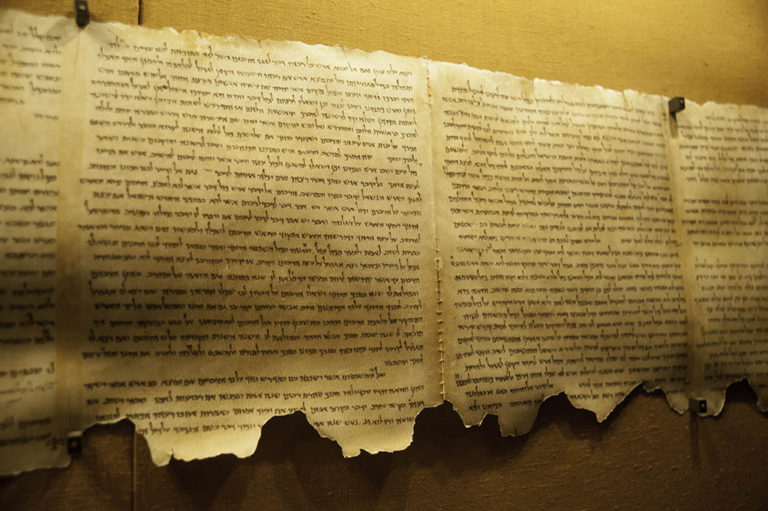Best Archaeological Sites in Israel
Israel has been the crossroads between Asia, the Arabian Peninsula and Africa to the Mediterranean and Europe, for thousands of years. Many civilizations have passed along the ancient trade routes across Israel, and left their mark in the form of fascinating archaeological sites and artifacts. With its passion for preserving its heritage, Israel has invested the greatest minds, tireless work and endless funds into uncovering and treasuring the country’s archaeological remains.
The country’s archaeological findings include sites relating to all three of the monotheistic religions and to many cultures. From the remains of pre-historic cave dwellers in the Carmel Mountains, and Biblical sites like the City of David to desert cities along the ancient Incense Route and complete Roman cities, as in Caesarea and Beit She’an, Israel’s archaeological sites paint a picture of human history, over thousands of years. The archaeological discoveries in Israel are presented in their authentic form, well preserved and cherished for all visitors to enjoy.
1. Western Wall Tunnels
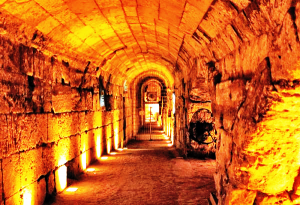
The Western Wall Tunnels connect the above-ground Western Wall prayer area, to the north-west side of Temple Mount, running along the side of Temple Mount under the Old City. Visiting the tunnels is like stepping back in time. During the Second Temple period (2nd Century BC-70AD), the area, now seen in the tunnels, was above ground but over the course of 2,000 years debris and new construction on top of ancient remains, have hidden the original structures. Now the tunnels have been excavated and 500 meters of the long tunnel are open to the public.
Visitors can enter the tunnel from the northern side of the Western Wall prayer area, and follow the route beneath the Old City, ending at near the 1st station of the Via Dolorosa. Among the tunnel highlights there is a medieval cistern; a large hall; a Second Temple Period staircase; an ancient guardrail; a quarry; Hasmonean water tunnel and a Second Temple Period street. By touring the Western Wall Tunnel you can see hidden sections of the Western Wall, which once formed the outer wall of the Holy Temple. Religious Jews come here to pray at this section of the Western Wall, as they do at the section of wall above ground. The Foundation Stone in the tunnels, is the rock marking the Holy of Holies at the center of the ancient Temple and is perhaps the most sacred site according to Jewish tradition. Visits to the tunnels last just over an hour and need to be pre-booked.
2. Masada
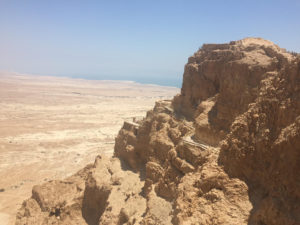
Out of the flat landscape of the Judean Desert rises Masada, a rock plateau or mesa standing 450 meters tall at its highest point. Due to Masada’s remote and isolated location, it was chosen by King Herod the Great to build his hill top retreat in 37BC-31BC. It was also the site of the last outpost of Jewish rebels, during the First Jewish-Roman War in 70AD. The Sicarii Jewish zealots were held under siege by the Romans for about 3 years, before choosing mass suicide rather than capture by the Romans. Masada’s remote location and desert climate, have meant that the archaeological remains have been left untouched and well preserved. Today visitors can visit the UNESCO site by taking a cable car to the mountain top’s flat plateau, or hiking the challenging “snake path” up the Cliffside. On the plateau you can see the remains of Herod’s palace and the structures of the palace complex, including a bathhouse, where frescoes have survived, storage rooms, dovecotes and cisterns. The extensive archaeological site is fascinating and has been preserved in such a way to protect the authenticity of the site. There is plenty to see and a lot to be learnt from the ancient structures. Masada overlooks the Dead Sea and offers visitors spectacular views across the desert wilderness and Dead Sea.
3. Caesarea
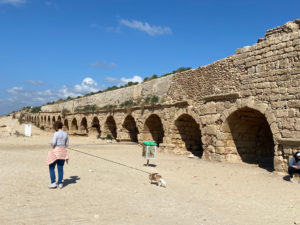
Caesarea is the site of an impressive archeological park, on the Mediterranean coast, half way between Tel Aviv and Haifa. The ancient port city of Caesarea has been excavated and restored including a perfectly preserved Roman theatre, where concerts are still performed today. Caesarea was originally a Phoenician port city, until conquered by the Hasmonean Kingdom. In 21BC the Roman emperor gave Caesarea to King Herod the Great and he turned it into a lavish and important port city. Here he constructed a harbor with advanced engineering. Part of Herod’s city included a 1st century BC water system, which brought fresh water from the springs of Mt. Carmel, 10km away, to Caesarea via an aqueduct which can still be seen today.
Visitors to Caesarea can see the well preserved remains of a huge hippodrome, Roman bathhouse, pillars from the courtyard of Herod’s palace, storage rooms, dwellings and more. Parts of Herod’s original palace are now immerged beneath the sea, together with part of the original Roman harbor. Divers can swim through an underwater “museum” of archaeological artifacts, on the seabed of the harbor. The archaeological park also includes the remains of Crusader structures, like the Crusader gate, fortified walls and moat. As part of the archaeological park, there is a multimedia presentation which takes you through the history of the city. There is also a museum displaying archaeological artifacts and statues, found during the excavations.
4. Beit She’an
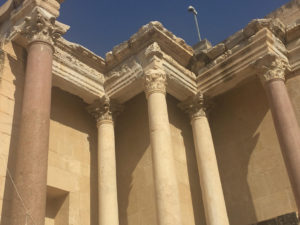
The Biblical Canaanite city of Beit She’an stood at a strategic point between the Jezreel Valley and the Jordan Valley. In 924BC the city was captured by invading Egyptians and in 732BC the Assyrians destroyed the city completely. The Romans rebuilt the city and the Byzantine (Eastern Roman Empire) city of Scythopolis grew, to be a large and important Christian city until in the 8th century AD it was leveled by a huge earthquake. During the Crusader era a fortress was built east of the Byzantine city, using stones from the ruins. The Beit She’an became the small, unimportant village of Beisan under the Ottomans. The remains of the ancient Roman city were left in ruins, until excavated after the establishment of the State of Israel in 1948. Today visitors can see the result of painstaking work which revealed many of the ancient city’s major structures.
The archaeological site is in pristine condition; visitors can walk along the ancient colonnaded Palladius Street which extends to an incredible theatre. Flanking the Roman street were once stores, homes, public buildings and roofed sidewalks. There is a large bathhouse, the remains of mosaics, paved floors an even the public toilets. At its height the Byzantine city had a population of 40,000. At night there is a spectacular multi-media tour where the national archaeological park is lit up.
Tel Beit She’an stands beyond the Roman city and is an 80 meter high mound, where excavations have uncovered 18 layers of civilizations dating as far back as the Neolithic Period (8,000-6,000BC). The Tel was continually occupied until the Middle Ages and the Roman city built at the foot of the mound, where it could expand. A walk thought the archaeological park, is like walking through a real Roman city, so much of the city was recovered that it is easy to imagine the ancient inhabitants going about their everyday business.
5. Beit Guvrin

Beit Guvrin makes a wonderful day out even if you have no interest in archaeology! Even bored children will love exploring this unique site. Beit Guvrin-Maresha National Park is in the wood-covered, fertile Lowlands. The park covers 1,250 acres and encompasses the remains of the Biblical city of Maresha and Beit Guvrin. Maresha is mentioned in the Bible (2 Chronicles 11:5-8 and Joshua 15:44) and its history can be traced back to the 9th century BC. Having been inhabited by many civilizations Maresha was destroyed in 40BC by Roman enemies. Maresha was abandoned and the inhabitants moved to nearby Beit Guvrin, which became an important city. Beit Guvrin is mentioned by the Roman historian Josephus in 68AD and in the Jewish Talmud and Midrash. Most of the caves we see today, were dug out during the Muslim Period which followed the Christian Byzantine era.
The highlight of Beit Guvrin is the network of caves, which were used by ancient inhabitants for many purposes. Visitors can follow a route through the park from cave to cave. You can enter the caves, some of which are huge and see how they were once used as cisterns, quarries, storerooms, dovecotes, underground oil presses, animal shelters and burial tombs. The caves were hewn out of soft chalk rocks. Highlights include the Sidonian Caves, where underground burial tombs are decorated with brightly colored frescoes. The cavernous Bell Caves were created during the Byzantine and Muslim eras, and used mainly as quarries, to provide building material for the coastal cities.
Also within the park are the remains of St. Anne’s Church, a Byzantine structure restored by the Crusaders. Today only the elegant apse of the church remains. Within the park grounds there is an ancient theatre and Crusader fortress.




